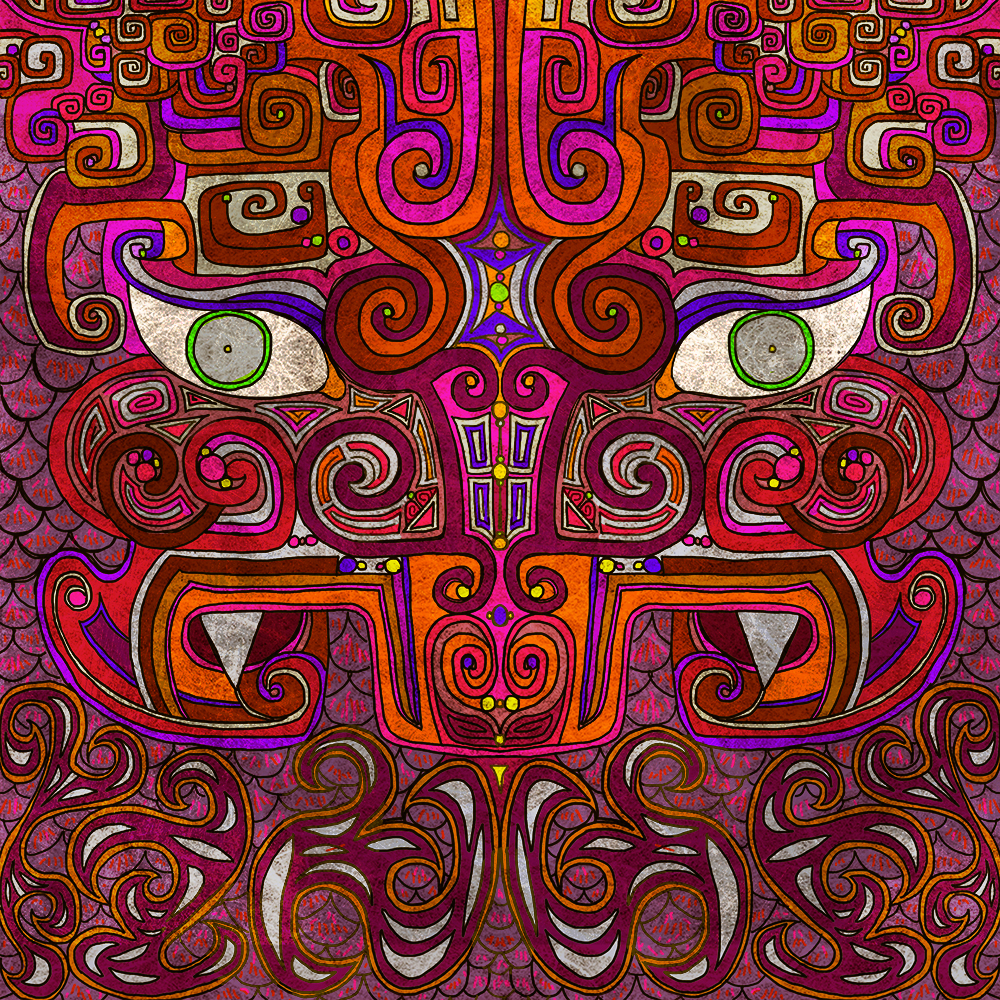These four patterns were inspired by four monster called XiongShou described in an ancient Chinese myth story called “Shan Hai Jing (Book of Mountains and Seas) ” wrote about 4,000 years from now.

Hundun is one of the four fiends in ancient Chinese mythology. The other three fiends are Qiongqi, Taowu, and Taotie.According to the ancient literature of Shan Hai Jing, it was depicted as a dog-like or bear-like monster with four wings and six feet

Tao Wu is depicted as a tiger with a human head and represents the ignorance of teaching, language and virtue.

TaoTie is the 5th dragon son who loves food. He is the dragon that has the power to bring wealth into your household. He is often seen on ancient bronze food vessels and tableware. His image ensures a continuous supply of food and abundance. You can invoke his presence on your dining table by investing in a set of dragon crockery. Or use rice bowls that have his image painted on.

There is a god here who looks like a yellow sack. He is scarlet like cinnabar fire. He has six feet and four wings. He is Muddle Thick. He has no face and no eyes. He knows how to sing and dance. He is in truth the great god Long River. (2, tr. Birrell 2000:226)
The Shen yi jing 神異經 "Classic of Divine Wonders" records a later variation of Hundun mythology. It describes him as a divine dog who lived on Mt. Kunlun, the mythical mountain at the center of the world.
It has eyes but can't see, walks without moving; and has two ears but can't hear. It has the knowledge of a man yet its belly is without the five internal organs and, although having a rectum, it doesn't evacuate food. It punches virtuous men and stays with the non-virtuous. It is called. Hun-tun. …Quoting the Zuozhuan Hun-tun was Meng-shih's untalented son. He always gnaws his tail, going round and round. Everyone ridiculed him. (tr. Girardot 1983:188)
A poem in the Tang Dynasty collection Hanshan refers to the Zhuangzi myth and reminisces about Hundun.
How pleasant were our bodies in the days of Chaos, Needing neither to eat or piss! Who came along with his drill And bored us full of these nine holes? Morning after morning we must dress and eat; Year after year, fret over taxes. A thousand of us scrambling for a penny, We knock our heads together and yell for dear life. (78, tr. Watson 1970:77)
Note the addition of two holes (anus and penis) to the original seven (eyes, ears, nostrils, and mouth).


